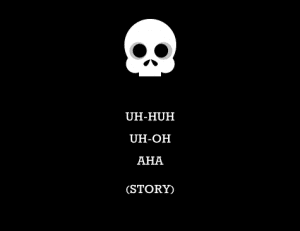Create a compelling theme, premise and story that supports your brand promise
In brand storytelling, you strive for clarity to help people understand your purpose. But it’s hard to appreciate how to craft clear and concise brand stories unless you see the process in action. Airbnb is an exemplar of brand storytelling for a purpose-driven company and what it has meant for the organization’s growth.
The three-step story creation process I’m about to show you accomplishes three things for you and your brand:
- Your one-word theme clarifies the singular message you want to communicate to an audience
- Your And, But & Therefore narrative framework creates the context that clarifies the relevance of your theme for your audience
- Your authentic real-world example story demonstrates your theme in action and the value of your brand to your audience
The ROI of brand storytelling in Airbnb’s case is a $30 billion valuation. Perhaps even more valuable is that culturally Airbnb has become a verb, “Airbnb it.”, which is a brand storyteller’s dream because it turns your offering into substantive action.
Airbnb arrived at their theme by asking the existential question: “Why do we exist as a company?” Their answer was to help people feel like they belong anywhere they travel. Their research showed that travelers didn’t want to just be tourists. They want to be insiders.
So nothing in the Airbnb brand story makes sense except in the light of belonging: its one-word theme that clarifies why they do what they do.
What’s your ‘one thing’ and how do you use stories to support it?
What’s your central theme captured in one word; your Belonging?
Once you arrive at your one-word brand descriptor, the next step is to add context to your theme by using the And, But & Therefore (ABT) narrative framework. The ABT helps you test your premise to see if your purpose in the world is truly urgent and relevant. Here’s what I think AirBnB’s ABT could be:
There are people who wish to explore interesting places around the world and to feel less like tourists and more like locals. But typical tourism houses you in large hotels, promotes crowded tours and separates you from the indigenous experiences you seek. Therefore, AirBnB accommodates explorers with authentic residences where you feel like you belong anywhere.
The ABT structure guides you to create a concise brand proposition as it uses the primal elements of set up (And), the customer problem your brand is solving for (But), and your sought-after solution (Therefore). It’s perfect three-act story structure that your customers’ minds can’t resist because its the narrative algorithm of set up + problem = resolution for how we process meaning. The exercise proofs your brand position by making you look at it concisely and critically, and it clarifies your premise for your audience.
Now that you have your one-word theme and have crafted an ABT that places it in context, provide an example story that infuses your theme with human emotion and meaning.
Airbnb did a brilliant job sharing an anecdote that supports its Belonging brand mission. But it’s not just about creating a story. It’s how you craft it using the five primal elements of storytelling:
- Timestamp: When did this story happen?
- Location stamp: Where did this event occur?
- Character: Who is the central character of this story and how do you relate to them?
- Action: What happened and what was the surprising outcome?
- Aha: How does this story based on true events support the Airbnb promise of feeling like you belong anywhere?
Before reading more of this post, watch the video again and experience how its structure reveals itself to you now that you know what to look for. And then read the script below and see how the ABT narrative structure of set up/problem/resolution creates the story arc that drives the tale forward.
The narrative framework for the Airbnb brand story
Berlin, 1987. My father was a guard on the west side of the Berlin wall. While another man guarded the east. Eventually, the wall came down.
But even after moving away, my father carried a piece of it with him. While I grew up, it lingered over all of us. A barrier between him and the rest of the world. I decided I would help by taking him back to Berlin to show him the beautiful place it had become. When we arrived, the stranger who answered the door became familiar. The guard who patrolled the opposite side of the wall now welcomed us as a friend.
After that, things were better for my father. Airbnb: Belong anywhere.
The Wall and Chain story is just one element in the overall uniting of Germany narrative that Airbnb used to support its brand. You can read about the entire integrated story marketing campaign here.
Try this brand story exercise for yourself. You don’t need an overarching brand theme to make it work. Simply select a one-word descriptor that describes one of your brand attributes, then use this winning process to craft and tell a compelling story:
- STEP 1: Find your one-word theme to focus your message
- STEP 2: Craft an ABT to clarify your premise for your audience
- STEP 3: Share an anecdote that illustrates your theme to invite your audience into your world
This simple three-step storytelling process creates stories that help your brand promise belong anywhere in the hearts and minds of your core customers.
Story on!












at 1:05 pm
[…] How to Write a Simple Short Story that Promotes Your Brand […]
at 8:49 am
[…] viewers personally and leaves them wanting to know more about your brand. Just look at how well brand storytelling has worked for […]
at 2:01 am
[…] events, etc., works if there is a good story to tell (from the customers’ point of view). The story is what is missing in most cases, or it is flat out wrong because it is all about the company and […]